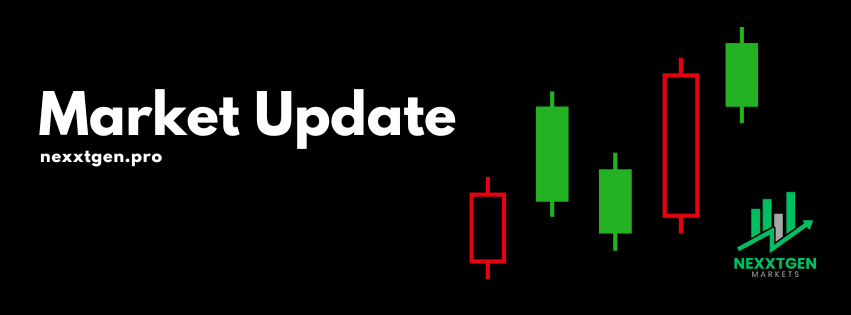Mastering the Art of Derivatives Trading: Strategies, Risks, and Rewards
- NexxtGen Markets

- May 15, 2024
- 3 min read
#Derivatives #Trading #Investing #Futures #Options #RiskManagement #Hedging #Speculation #FinancialMarkets #eToro #NexxtGen #Leverage #MarketRisk #CounterpartyRisk #Arbitrage #SpreadTrading #Finance #StockMarket #Commodities #CurrencyTrading #Education
Learn more: https://bit.ly/nexxtgenmarkets
In the realm of financial markets, derivatives trading stands as a dynamic and versatile avenue for investors seeking exposure to various assets and instruments. From futures and options to swaps and forwards, derivatives offer a wide array of opportunities for profit, hedging, and risk management. Let's delve into the world of derivatives trading to understand its intricacies, strategies, risks, and rewards.
Understanding Derivatives:
Derivatives are financial instruments whose value is derived from an underlying asset, such as stocks, bonds, commodities, currencies, or indices. They enable investors to speculate on price movements, hedge against risks, and manage exposure to various market factors. Here are some key derivatives:
Futures Contracts: Futures are standardised contracts to buy or sell an asset at a predetermined price and date in the future. They are commonly used in commodities trading but are also prevalent in financial markets.
Options Contracts: Options provide the buyer with the right, but not the obligation, to buy (call option) or sell (put option) an asset at a specified price within a certain timeframe. Options offer flexibility and are widely used for hedging and speculation.
Swaps: Swaps involve the exchange of cash flows or liabilities between two parties. Common types of swaps include interest rate swaps, currency swaps, and commodity swaps. Swaps are often used to manage interest rate or currency risk.
Forwards: Forwards are customised contracts between two parties to buy or sell an asset at a future date and price. Unlike futures, forwards are not standardised and are typically traded over-the-counter (OTC).
Strategies in Derivatives Trading:
Derivatives trading offers a plethora of strategies tailored to different market conditions and investor objectives. Here are some common strategies employed by derivatives traders:
Speculation: Traders can speculate on the direction of asset prices using derivatives. For example, buying call options to profit from a rise in the underlying asset's price or selling futures contracts to benefit from a decline.
Hedging: Hedging involves using derivatives to offset potential losses in an investment portfolio. For instance, buying put options to protect against downside risk in a stock holding or using futures contracts to hedge against fluctuations in commodity prices.
Arbitrage: Arbitrageurs capitalise on price discrepancies between related assets or markets. They buy and sell derivatives simultaneously to exploit mispricings and earn risk-free profits.
Spread Trading: Spread trading involves simultaneously buying and selling derivatives contracts to profit from the price difference between two related assets or contracts. Common spread trading strategies include calendar spreads and inter-commodity spreads.
Risks and Rewards:
While derivatives trading offers the potential for substantial profits, it also entails inherent risks that investors must consider:
Leverage: Derivatives typically involve leverage, amplifying both potential gains and losses. A small price movement in the underlying asset can lead to significant profits or losses in derivative positions.
Market Risk: Derivative prices are sensitive to changes in the underlying asset's price, market volatility, interest rates, and other macroeconomic factors. Unexpected market movements can result in substantial losses.
Counterparty Risk: In OTC derivatives trading, counterparty risk arises from the possibility of default by the other party to the contract. Counterparty risk can be mitigated by trading through regulated exchanges or using collateral and clearing mechanisms.
Complexity: Derivatives trading involves complex instruments and strategies that require a deep understanding of market dynamics, pricing models, and risk management techniques. Novice traders should educate themselves thoroughly before engaging in derivatives trading.
In conclusion, derivatives trading offers a diverse range of opportunities for investors to profit, hedge, and manage risk in financial markets. However, it requires careful planning, risk management, and expertise to navigate successfully. By understanding the nuances of derivatives instruments, employing sound trading strategies, and managing risks effectively, investors can harness the potential rewards of derivatives trading while safeguarding against potential pitfalls.
Trade with NexxtGen and eToro:
NexxtGen Markets is proud to partner with eToro, a leading online trading platform that offers a wide range of derivatives instruments. Through eToro's user-friendly interface and innovative features, traders can access global markets, execute trades, and manage their portfolios with ease. By joining eToro via our website, you not only gain access to a powerful trading platform but also support NexxtGen Markets as we may receive a small commission for referrals.











Comments